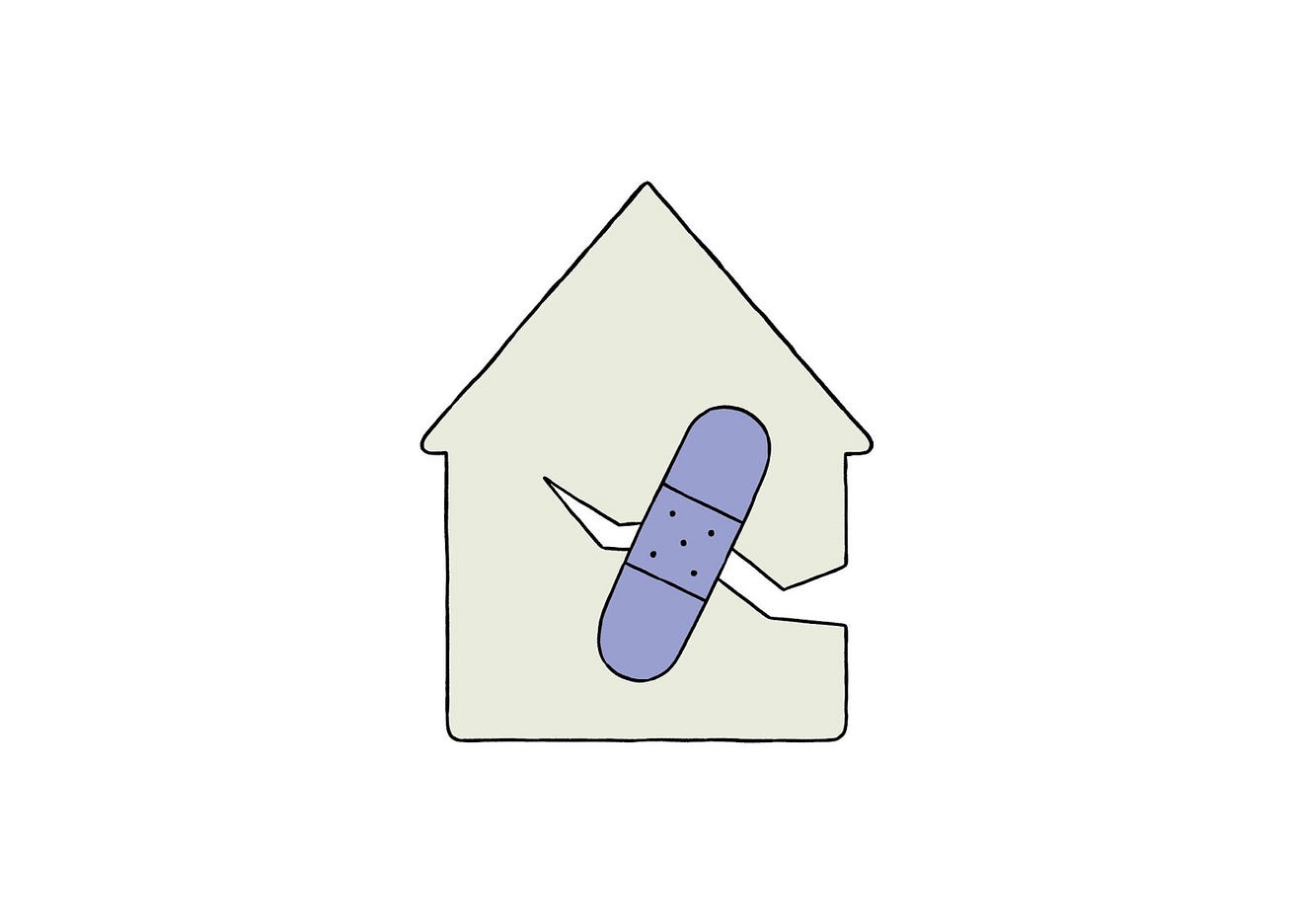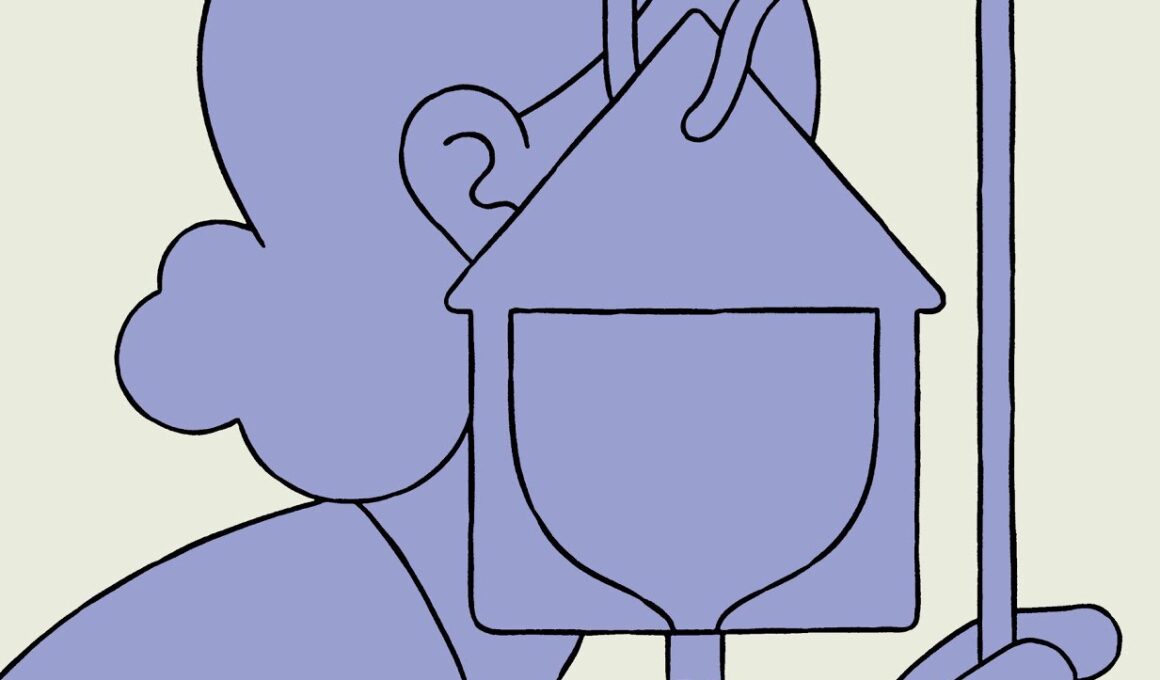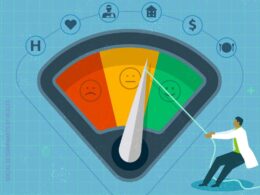With federal housing money in short supply, state and local authorities are looking to health dollars to help tackle homelessness.
The New York Times
By Lucy Tompkins
June 14, 2022
Living on the streets, Hanif Hightower learned which Philadelphia shelters were likely to have an open bed during the cold months or where he could get a meal or a hot shower.
But his resourcefulness had limits. Addicted to crack cocaine and struggling with clinical depression, he cycled in and out of jail and temporary rehab programs, returning to the streets each time he was released. Years passed this way. Then one day, in May 2019, an outreach worker for a local nonprofit offered him a way out: an apartment of his own, no strings attached.
Hightower, who is now 39, was on a list he didn’t know existed: the homeless people in Philadelphia most frequently found in the city’s shelters or jail cells.
Being on this list made Hightower eligible for something called supportive housing, which combines services like counseling and job training with keys to a home.
For decades, research has shown that this combination of housing and services is the most effective way to provide for people experiencing chronic homelessness, who make up about a quarter of the nation’s homeless population and have the most acute needs.
People are considered chronically homeless if they have a documented disability — including mental illness or addiction — and have been without housing for at least a year. Both Presidents George W. Bush and Barack Obama put money into creating more supportive-housing beds, and since 2007, when the government started keeping track, the number nationwide has more than doubled. Between 2007 and 2016, chronic homelessness declined by a third.
For decades, research has shown that this combination of housing and services is the most effective way to provide for people experiencing chronic homelessness, …
who make up about a quarter of the nation’s homeless population and have the most acute needs.
But money for this kind of housing flatlined during the Trump administration, and the number of people enduring chronic homelessness has been rising — up by 42 percent between 2016 and 2020, the last time there was a full national count.
While the Department of Housing and Urban Development has modestly increased spending on homelessness programs that fund supportive housing from year to year, about 90 percent of the money goes just to keep existing programs up and running.

Faced with this HUD funding gap, some local officials are eyeing an unlikely source: Medicaid.
The government-funded health insurance for people with low incomes and disabilities was not intended to provide housing.
But some argue that it has a role to play because the health issues of the chronically homeless can’t be treated without stable housing.
In the last decade Medicaid has inched toward acknowledging the interconnectedness of housing and health.
It has encouraged more state Medicaid programs to cover housing-related costs like furniture or security deposits — basically everything except paying the rent. Some states, like Arizona, have shown remarkable success by using state Medicaid funds for supportive housing, and they are now asking permission to use federal Medicaid money, too. It’s an appealing option for states because unlike rental assistance from HUD, Medicaid is an entitlement, and its budget expands to accommodate everyone who qualifies. No one has to ask Congress for funds.

The Philadelphia Story
Philadelphia’s unique system was devised decades ago by Estelle Richman, who saw up close how the lack of affordable housing complicated the lives of people with mental illness.
In the late 1980s, Richman was tasked with closing the state psychiatric hospital in Philadelphia.
For years, federal policies had encouraged the closure of state institutions, notorious for warehousing people with mental illness in wretched conditions. As deinstitutionalization gained momentum, an infrastructure to help care for people in their communities was supposed to emerge in its place. The federal Supplemental Security Income program was created to provide a basic income for people with disabilities, while Medicaid, created in 1965, paid for their health care. But, reflecting the concerns of the time, Medicaid’s creators were adamant that the program would not cover long-term stays in psychiatric hospitals or other institutions, with the exception of nursing homes. Nor would it pay to house people elsewhere, prohibiting the use of federal Medicaid funds for room and board.
HUD was also created in 1965, with a budget that soon grew to $26 billion.
But in the 1980s, President Ronald Reagan slashed that by more than 70 percent. (Even today only one in four people who qualify actually get rental assistance because HUD doesn’t have the money.)
At the same time, the Reagan administration repealed the Mental Health Systems Act, cutting funding that was intended to help build community mental health centers and pushing progress back by decades, said Steve Sharfstein, former director of Mental Health Service Programs at the National Institute of Mental Health.
“There would have been billions of dollars more that would have flowed to the states and would have created a much sturdier community support network for patients’ housing and employment and clinical services,” he said. “Instead, the 1980s brought the criminalization of the mentally ill and the homelessness epidemic.”
Community-based housing for people with mental illness was largely left to the states to develop with money saved by closing asylums.
But the states never committed enough money to that effort, and Richman saw more people with mental illness or disabilities living on the street as a result.
Community-based housing for people with mental illness was largely left to the states to develop with money saved by closing asylums.
Richman later took a job as head of Philadelphia’s mental health department, where she spent years devising a system to use Medicaid to help address that failure.
Medicaid is financed partly by the federal government and partly by the individual states.
While states have leeway in how to spend their portion, strict rules dictate how the federal part can be used. Richman got around this by creating a city-led nonprofit that would provide mental health and addiction care for Philadelphia’s Medicaid population, rather than contracting with for-profit insurance companies like Aetna or Anthem. This kept money in the city’s hands. The nonprofit could use some of the savings it achieved however it liked — including paying for clients’ rent. In 1997, Richman’s idea was approved, and Community Behavioral Health was born.
“We worked hard, we managed well, we saved money,” said Richman, who is now retired. And that money went right back into the community.
Since then, the Philadelphia Department of Behavioral Health and Intellectual Disability Services, which oversees the city nonprofit, has used at least $101 million in savings from Medicaid to pay rent, give cash stipends, develop affordable housing and fund new homeless initiatives. In the last decade alone, about 2,300 people have moved from homelessness to housing this way.
The nonprofit has come under scrutiny. A recent audit of its 2017 spending found its oversight of contractors was not strict enough, leading to millions of dollars spent on services that weren’t delivered. Jill Bowen, who took over as the commissioner of the agency that oversees the nonprofit in 2020, said the problems have been addressed.
Hightower now lives in a one-bedroom apartment in Germantown, a short walk from a park.
He’s on medication for his depression, and calls his case manager, whose phone number he knows by heart, whenever he needs advice, which can be several times a week. His apartment is sparsely furnished, and the walls are covered in drawings and motivational phrases he scrawled in pen. He wears his apartment keys on a lanyard around his neck.
“I was down there for a long time,” he said of his time on the street. “Enough for me to understand what struggling felt like, and just wanting to hold on to something.”
It costs $24,000 a year to pay Hightower’s rent, connect him with a caseworker and give him a $200-a-month stipend — all of which is paid for with the Medicaid money saved through the city’s nonprofit.
Eighty-five percent of the people in this program are still housed after five years.
The Medicaid reinvestment money isn’t supposed to pay for Hightower’s housing forever.
He can apply for a federal subsidy from HUD when his program ends in two years, but the subsidies are in short supply, and the city regularly stops taking new applications because the wait list is so long.
“The bottom line is there’s not enough housing subsidies for the demand,” said Bill Maroon, chief operating officer at Pathways to Housing, the nonprofit that housed Hightower. “Medicaid could play a role in filling that gap.”

Arizona’s “pretty incredible” experiment
Creating a nonprofit like Philadelphia’s is rare. More commonly, states use their own Medicaid money to test different ways of delivering care.
Creating a nonprofit like Philadelphia’s is rare. More commonly, states use their own Medicaid money to test different ways of delivering care.
For the past 11 years, Arizona has been spending $30 million a year of state money to pay for supportive housing for more than 2,500 Medicaid recipients who experienced homelessness and have serious mental illness.
Studies consistently show that Arizona’s program reduces health care costs. The most recent suggests that Arizona’s Medicaid agency saved more than $5,000 a month for each person housed, possibly offsetting the cost of housing, which runs about $1,000 a month on average.
Studies consistently show that Arizona’s program reduces health care costs. The most recent suggests that Arizona’s Medicaid agency saved more than $5,000 a month for each person housed, possibly offsetting the cost of housing, which runs about $1,000 a month on average.
Much of that savings arises because people who are housed spend much less time in emergency rooms and psychiatric hospitals.
Among the people who received supportive housing in 2020, visits to emergency rooms dropped 30 percent and inpatient hospital admissions dropped by 44 percent. Arizona is now asking for a waiver to use federal Medicaid money so it can get more people off the streets and into supportive housing.
In 2015, an initiative to dig wells and install communal taps seemed to be a turning point for a country struggling to provide safe drinking water to its people. But villagers continued to get sick. What went wrong?
In 2000, the United Nations vowed to reduce dramatically the number of people living in extreme poverty. They met the goal, but the pandemic and dire conditions in sub-Saharan Africa show A pledge to cut poverty. how fragile these gains can be.
Measuring how much supportive housing costs the government over the long-term is tricky.
Paying rent creates an ongoing and growing cost. But it also shifts the burden from expensive crisis systems, like emergency rooms, to ones that help people live more stably, said Dennis Culhane, a homelessness and housing policy expert and professor at the University of Pennsylvania.
“It’s pretty incredible,” said Jami Snyder, director of Arizona’s Medicaid agency. “You could argue the provision of housing and wraparound supports is more effective than almost any clinical intervention we could offer.”
“It’s pretty incredible,” said Jami Snyder, director of Arizona’s Medicaid agency. “You could argue the provision of housing and wraparound supports is more effective than almost any clinical intervention we could offer.”
The need is great; the wait list for Arizona’s supportive housing program is at least as long as the number of people already admitted.
If approved, the federal Medicaid money would pay for up to 18 months of housing as well as one-time rental payments to keep vulnerable people from being evicted and losing housing in the first place.
The state is still negotiating with Medicaid, and hopes to begin its program in October.
Medicaid has refused similar requests in the past. New York was the first to use its state-only Medicaid dollars for supportive housing, and in 2012, the state asked to use federal money, too.
Its request was denied because of Medicaid’s rule about not paying for rental costs. So instead, New York has been paying to house 15,000 high-cost Medicaid recipients on its own. And, as in Arizona, that effort has reduced health care costs. But much more housing is needed, as is clear from the many people experiencing chronic homelessness who remain stuck in New York City’s shelter system, where the average stay for an individual adult is well over a year. New York is working on a new request that it hopes will persuade Medicaid this time around.
“You can find agencies and leaders of agencies all around the country who are finding creative ways to navigate around the failures of other systems,” said Steven Banks, who sued the city and won the universal right to shelter on behalf of the city’s homeless before he became commissioner of New York City’s Department of Social Services himself.
But he argues these workarounds would be unnecessary if the federal government did more.
Making housing vouchers an entitlement would be a huge step forward, Banks said. “And it would result in significant progress if Medicaid dollars could be used for rental assistance in addition to services to help people regain stability in their lives when living with significant mental health challenges,” he added.

A right to housing?
The federal government is a long way from viewing housing as a health care right, but a 1999 Supreme Court decision, Olmstead v. L.C., nudged it in that direction.
The Court ruled that people with disabilities, including serious mental illness, have a right to a living situation that is as integrated into their community as possible. In the years after that ruling, progress was slow, in part because of a longstanding question: Whose responsibility was it to pay for community-based housing?
Then, during the Obama administration, officials saw an opportunity for Medicaid to help, said Vikki Wachino, who was the director of the Center for Medicaid and CHIP Services at the time.
In 2015, a year after the Affordable Care Act went into effect, which made millions more Americans eligible for Medicaid, Wachino sent a memo to state Medicaid directors encouraging them to use funds to help comply with the Olmstead ruling. She noted that Medicaid could pay for support services people needed to succeed in their own homes, including things that weren’t strictly medical, like searching for an apartment, resolving issues with landlords, paying security deposits, first month’s rent and furniture costs. Medicaid still couldn’t be used to pay rent month to month, but the memo set off a wave of interest in using it to address housing issues.
Today 27 states offer some kind of housing support through Medicaid and many specifically try to reach people who are experiencing or on the verge of homelessness.
“Only recently has the federal government said you can use Medicaid to help people find a unit, move them in, buy furniture,” Culhane said. “That’s important because the №1 federal dollar in every state is Medicaid. We have to make that program work to help solve homelessness.”
Not everyone agrees that Medicaid should pay for housing, and paying for Medicaid already accounts for a large chunk of state budgets.
Jennifer Ho, a former senior adviser at HUD as well as deputy director of the United States Interagency Council on Homelessness, feels it’s not right to pin that responsibility on the health sector. The deep pockets of the health care system are “not infinite,” she said. “And it’s dealing with its own cost pressures, like the fact that we have the most expensive health care system in the world.”
She argues for putting more money into housing assistance through HUD while compelling the two systems to work together.
In fact, the American Rescue Plan, enacted in March 2021, included $5 billion in emergency housing vouchers for people experiencing homelessness.
That’s 70,000 additional vouchers — the biggest increase in recent history — and could make a big difference.
But these vouchers are currently funded for just five years.
Even Richman, whose creative thinking has been helping homeless Philadelphians for years, feels that turning to Medicaid to pay for housing isn’t the ideal approach.
She would much prefer to see HUD’s housing programs be adequately funded.
“As a strategy, this is relying on your health agency to produce your housing,” Richman said. “But we also have to be practical around what works.
If the HUD model isn’t working or we can’t get the two entities to work together more effectively, I would go this direction.
I’d go this direction in a second.”
Originally published at https://www-nytimes-com.cdn.ampproject.org on June 14, 2022.
The Headway initiative is funded through grants from the Ford Foundation, the William and Flora Hewlett Foundation and the Stavros Niarchos Foundation (SNF), with Rockefeller Philanthropy Advisors serving as a fiscal sponsor. The Woodcock Foundation is a funder of Headway’s public square. Funders have no control over












